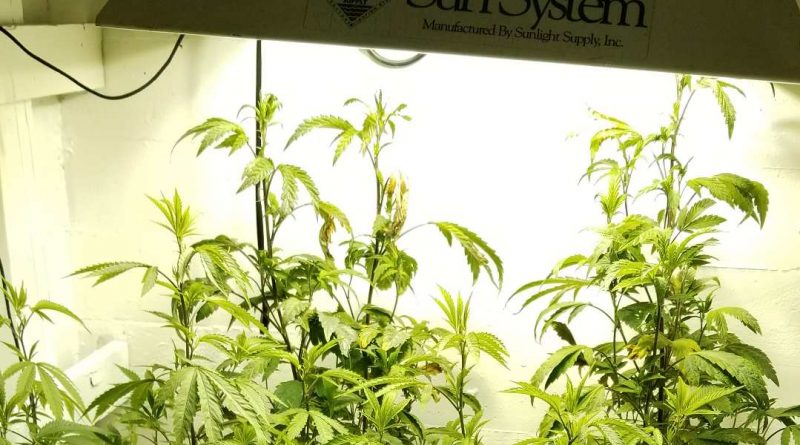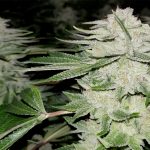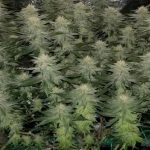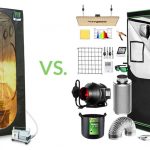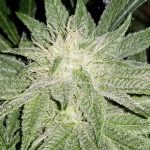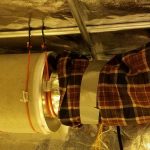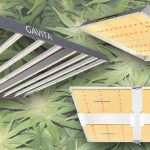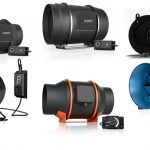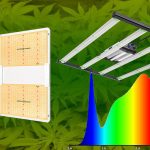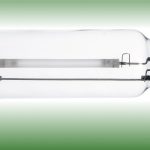Picking the best grow light can be difficult for new growers. There are a number of factors to consider including the type of grow light, the size of your grow area, understanding light intensity and quality, temperatures, and for most growers — price. In this article we’ll help you understand the basics so you can choose the best light for your needs.
Types of marijuana grow lights
There are several types of grow lights for beginner and intermediate growers.
- High-intensity dishcharge (HID)
- Metal Halide
- High-pressure sodium (HPS)
- Ceramic metal halide (CMH)
- LED
- Fluorescent
- Compact fluorescent lighting
- Fluorescent tube lighting
Metal halide
Metal halide (MH) grow lights produce a bluish white light and are used for the vegetative stage of marijuana growth. They’re a great option for marijuana growers due to price and the results they produce.
You’ll need to run them through a light fixture consisting of a ballast and a hood. Larger sized MH bulbs can product a lot of heat, so choosing an air-cooled hood powered by a 6 or 8 inch fan is a good idea. If you have a separate vegetative grow area or a mother room then you would use metal halide bulbs there, and then have a high pressure sodium bulb for flowering.
High-pressure sodium
High-pressure sodium (HPS) lighting produces a yellower light than MH and is used for flowering. HPS bulbs are popular because they’re inexpensive but produce great yield. There are multiple sizes of high pressure sodium bulbs available.
Low wattages such as 400 would work well for small grow areas such as 2’x3′ or smaller. But if you’re looking to get a canopy full of dense, huge buds then you’ll want to go with larger sizes such as 600 watt (for a 4’x4′ area) or 1000 watt (5’x5′ area or larger). Heat is definitely an issue with large HPS bulbs, you’ll need to run air cooled hoods.
Ceramic metal halide
Ceramic metal halide (CMH) lights are more efficient then regular metal halide lights. More expensive too.
LED lights
LED lighting technology has come a very long way in recent years. They’re much more expensive then HID lighting, and for years they were associated with a lower yield. Newer LEDs have overcome much of these early issues.
New growers often are scared away by high price tags on some LED models. But be aware that while you’ll see a bunch of cheap LED grow lights for sale online, you’ll get what you pay for. Crappy LED lights will equal a crappy yield. More expensive models offer better light quality and can deliver bountiful harvests. Some models even include an option for ultraviolet (UV) light to improve potency during the final few weeks of flowering.
The lower electricity usage of LEDs combined with not having to replace bulbs (something required for MH and HPS) will help offset the initial sticker shock. But since quality LEDS cost several times more than HID equivalents, it’s an important decision if you’re looking to buy a grow light.
Fluorescent lighting
Compact fluorescent lighting
Compact fluorescent lighting (CFL) isn’t the best choice for growing weed because it doesn’t produce the light intensity needed for huge, dense bud development. CFL bulbs produce very little heat, so they’re useful for tiny grow areas. They’re also useful for rooting clones or germinating seeds.
Fluorescent tubing
Fluorescent tubes such as T5 lights have the same problem as CFL bulbs in the flowering cycle – not enough light intensity for strong bud growth. You’ll end up with wispy, sorry looking results. But for seeds and clones, T5 bulbs are a good option.



